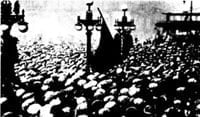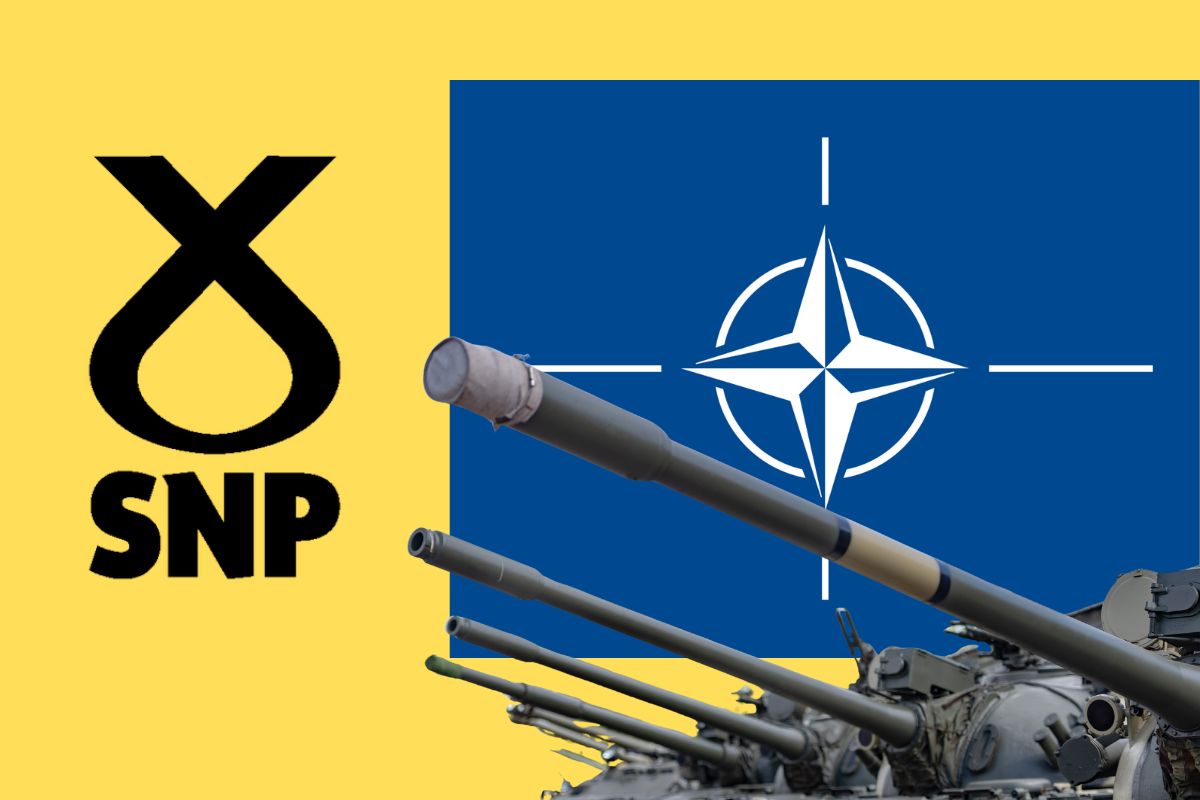The unexpected by-election in the Glasgow East constituency
has focussed the attention of the political parties and the media on a part of
Clydeside which it has long been fashionable to ignore.
At the
general election Labour obtained a majority of 13,500 over the SNP candidate,
gaining 60.7% of the vote. If ever Labour had a safe seat it was Glasgow East.
This has led to the constituency being taken for granted and systematically neglected.
In Greater Glasgow, life expectancy is below the national average at 70.7
years. In the Calton ward of Glasgow East it is just 53.9 years, a figure
comparable with many ‘third world’ countries.
Labour must
argue that only socialist policies can possibly address the appalling economic
and social deprivation from which much of the constituency suffers. The
hopelessly flawed policies of New Labour must be set aside if an electoral
disaster is to be avoided. They should remember that there is a proud tradition
of socialism on Clydeside to take inspiration from in the campaign to beat the
Conservatives and the SNP, the ‘Tartan Tories’.
There was a
long history of political radicalism in Glasgow
and district going back to the 1820s. However from around 1910 to the early
1930s, the local working class was perhaps the most consistently militant in
the whole of the UK.
This was a reflection of the region’s industrial importance at the same time
that it contained some of the greatest concentrations of poverty and bad
housing in Western Europe. Many ancient and
once fine buildings had degenerated into squalid multi-occupied verminous,
insanitary slums and fire-traps. Even many of the city’s huge stock of
well-built nineteenth century tenements were located close to foul-smelling,
polluting industries such as ‘Dixon’s Blazes’ at Polmadie, a big iron works
that cast a pall of smoke and smuts over much of Gorbals.
In such a
situation, housing was a constant source of grievance. Matters came to a head
during World War I when many of the city’s men were in the armed forces and
greedy landlords tried to impose massive rent increases on the dwellings they rented
out. If these landlords thought that in the absence of their men the women
would be a soft touch, they were quickly disabused. Organised opposition to the
increases in the form of rent strikes began in the densely populated district
of Govan, dominated by ship-building and associated industries. Women were at
the forefront of this struggle and were known as ‘Mrs Barbour’s Army’ after
their formidable leader. When the sheriff’s officers arrived, intent on making
evictions, they would find the close giving access to the tenements blocked by
a solid army of residents, sometimes numbering hundreds. In such a situation
there was little the authorities could do. The strikes spread across the city
and beyond Glasgow
and in November 1915, a harassed government poured oil on troubled waters by
returning all rents to their pre-war level.
War is a
catalyst of the tensions and discontents always simmering away just beneath the
surface of society. Hard-faced men were making huge profits from supplying the
demands of the armed forces, often with materiel of poor quality. For many
workers on Clydeside, the war was a capitalist one, having little to do with
saving the world for democracy and much more to do with using force to seize
markets and sources of raw materials. As always, the capitalists, British or
foreign, got the workers and their families to fight the war for them, either
by direct military action, on the industrial front or through the domestic
sacrifices that were required.
The demands
of the war effort put the ship-building and engineering workers of the region
in a strong bargaining position. Calls for higher wages were refused by the
employers. A well-supported unofficial strike took place in 1915 led by a
‘Labour Withholding Committee’. The Amalgamated Society of Engineers’ official
apparatus threw its lot in with the government and the bosses, supporting the
suspension of normal union rights for the duration of the war, thereby
destroying gains made after decades of struggle. After some successes and a few
setbacks and having learned that they could not look to the ASE leadership for
support, large numbers of local shop stewards established the Clyde Workers’
Committee of directly elected rank-and-file delegates. A major concern was
‘dilution’ which the government and the bosses argued was necessary if
production targets were to be met. Dilution involved the substitution of
unskilled for skilled labour and was rightly viewed with great suspicion. The
government launched a campaign against leading activists around the CWC. In the
absence of support from the ASE, a degree of demoralisation set in but the influence
of the CWC can be seen in major strikes in 1917 against dilution in Barrow, Coventry and Sheffield.
The CWC led
a movement to fight what was likely to be mass unemployment with the end of the
full order books of wartime and the demobilisation of the armed forces. Working
weeks of 50 or more hours had been common during the war years. The ASE was
prepared to lobby for a 47-hour week but the CWC in 1919 took up a campaign for
a 40-hour week, the reduction in the working week being intended to share out the
available jobs. Shipyard workers, engineers and miners spearheaded a strike in
January 1919 in which over 100,000 Clydeside workers downed tools. This
culminated in a mass rally in George
Square in Glasgow
city centre at which the red flag was raised. The crowd was angry but unarmed
and peaceful, until mounted police launched an unprovoked baton attack. This
was the famous ‘Battle of George Square’. It was followed by the arrest and
imprisonment of many the leading local activists.
The
Secretary of State for Scotland
told the cabinet that the events of January 1919 in Glasgow were not a strike but a ‘Bolshevist
uprising’. There is no question that the most politically aware workers on
Clydeside were greatly encouraged by the Bolshevik Revolution in Russia in October 1917 but events in Scotland
did not constitute a revolution. For all that, terrified by the militancy on
Clydeside and many other major industrial areas in Britain,
the government proceeded to move an army of occupation into Glasgow. 10,000 troops from outside Scotland
were brought in while local soldiers were confined in Maryhill Barracks for
fear that they might fraternise with the strikers and their families. Tanks and
even military aircraft were mobilised in support.
The
Independent Labour Party was particularly strong in Scotland and its members
such as James Maxton, David Kirkwood and John Wheatley worked tirelessly with
fellow-socialists including Willie Gallacher and John Maclean to consolidate
links between the industrial and political wings of the labour movement. They
were at the forefront of the vigorous anti-war movement in the region, they
were involved in the rent strike, they fought against dilution and other
attacks on workplace practices and made links with socialists and union
militants elsewhere in Britain and with the Bolsheviks in Russia.
The events
briefly described above are one small part of Clydeside’s unfinished story of
struggle. If a criticism could be made of these stalwart class fighters it
would be that they failed to explain that solving all the justified grievances
of the people of Clydeside at that time could only begin with the socialist
transformation of society. This would have involved taking the means of
production, distribution and exchange from the capitalists and placing the
economy under the planned democratic control of working people, a process which
was necessarily international. In 2008, such a programme remains the only
effective way forward for the people of Glasgow East.
David
Cameron, the Tory leader, had probably never heard of Glasgow’s
East End until the by-election was announced.
Now he has called Glasgow East the ‘broken society by-election’, making sure of
course that the mass media was there in strength to hang on his every word as
he did so. Such cant brings to mind the anger of the poet Shelley, who in 1819
in The Mask of Anarchy described
Fraud whose copious tears turned to millstones as they fell while Hypocrisy
rode by on a crocodile, doubtless shedding crocodile tears – just like
Cameron’s.
“Next came Fraud, and he had on,
Like Lord Eldon, an ermined gown;
His big tears, for he wept well,
Turned to mill-stones as they fell.
Clothed with the Bible, as with light,
And the shadows of the night,
Like Sidmouth, next, Hypocrisy
On a crocodile rode by.”






